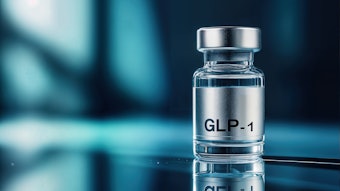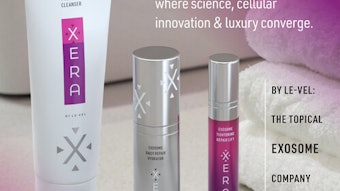- A perfect combination of technology and DIY, beauty devices are hitting a sweet spot for a variety of consumers.
- In order for a user to be completely satisfied with a device, there needs to be both an immediate visible improvement effect and a longer term cumulative effect.
- The efficacy, ease of use and innovation of beauty devices are all incredibly important factors in how any given new device technology catches the consumer’s eye.
- Topical beauty products are now being developed to be optimal when used in conjunction with beauty devices.
- Many beauty devices are utilized in extending the life of professional-level beauty treatments.
As the digital age collides with a DIY mentality, the at-home beauty devices market is pulsing with potential. Opportunities abound for expanding offerings and marketing products in a new way that capitalizes on the trend as consumers bring home everything from acne-treating blue light therapy to sonic cleansing and wrinkle-eliminating microcurrents.
Under Promise, Over Deliver
Clarisonic is one of the forerunners in skin cleansing systems, and has seen increased distribution and advertising thanks to its acquisition by L’Oréal in late 2011. The key to the brand’s staying power is its ability to fit into the consumer’s daily routine without overly complicating that routine, as well as providing benefits the consumer can see.
“We created Clarisonic to improve on facial cleansing—to take something that is a boring mechanical process and make it dynamic and fun to do,” explains Robb Akridge, co-founder and vice president of clinical affairs for the brand. The Clarisonic is successful because it provides an immediate improvement on the skin—e.g. softer and smoother. “It is also convenient and powerful, yet gentle so that it can be used every day for optimal results,” Akridge continued.
Consumer perspective of the success of beauty devices is subjective. However, in order for a user to be completely satisfied, there needs to be both an immediate visible improvement effect and a longer term cumulative effect. Brands cite deeper hydration and a “glow” from improved circulation as benefits that can be seen immediately, whereas plumping and firming of the skin would occur due to a more gradual increase in collagen and other proteins in the skin over time, as well as the presence of water-binding technology such as hyaluronic acid.
Consumers are always looking for the next best product. As a device manufacturer, the R&D team must listen to the consumer while at the same time giving her more than what she was expecting. “That is one of the reasons the Clarisonic cleansing system is so successful: we under promise and over deliver,” said Akridge.
Within the skin care market, there are major skin concerns, and for each of these concerns, Clarisonic is creating a complete package—a device and sonically optimized formulations—to provide synergistic results for customers. An example of this is the company’s Deep Pore Detoxifying Solution, which claims to reduce the appearance of pores by 25% after just one use. Overall, Clarisonic develops beauty devices by knowing its customers and the problems they have with their skin. “Once we focus on an issue, we then determine what is the best device and formula to help with this concern in a safe and rapid manner,” explained Akridge.
1+1=3
The acquisition of Clarisonic has helped to increase consumer awareness regarding skin cleansing systems overall and indicates that major beauty companies are taking interest in beauty devices. L’Oréal’s purchase may inspire other acquisitions.
“Essentially, the global at-home beauty devices market is likely to see a greater tendency of mergers and acquisitions activity as large established marketers acquire smaller marketers to gain market share and intellectual capital in this relatively avant garde segment,” states market researcher Kline & Company. Acquisitions would allow for increased consumer awareness and interest, as it generally leads to more advertising support, increased distribution and lower price points.
Another growth opportunity exists for beauty marketers to partner with device manufacturers. This synergistic idea has been observed in Japan by Kline, and is well illustrated by Panasonic recommending Shiseido cosmetic products for use with its devices—as well as packing AquaLabel moisture lotion with Panasonic’s Ultrasonic Beauty Device. These ventures allow tech brands to enjoy the cachet and reach of established cosmetic brands while providing brand-enhancing, cutting-edge technology.
“The opportunity is in the combination of devices and consumables where they have a synergistic effect but not where there is a consumable purely for recurring revenue reasons,” said Peter Luebcke, senior technology consultant, consumer products, Sagentia Ltd. To be successful, there must be value added for both the brand and the device technology. “Each on their own has efficacy and user experience value, but together they have an effect greater than the sum of their parts,” he explained. “It’s a bit like saying 1 + 1 = 3.”
An example of such a synergy would be a device plus an active formulation where not only is the formulation dispensed onto the skin or hair but is also either activated by the device and/or delivered deeper in to have greater efficacy.
A device can serve in a brand activation role as well, such as with the Unilever Dove hair diagnostic device developed by Sagentia. The device displays before and after levels of hair damage, showing that the user has benefited from using the range of Dove hair care products. “This is a powerful tool in demonstrating that there is efficacy and science behind marketing jargon,” explained Luebcke.
Synergistic Effect
A new generation of products that promise to boost the effects of devices by building on the concepts is also on trend, according to market researcher Mintel. From “electromagnetically balanced” liposome technology to sugar and oxygen, brands are looking to stimulate activity in the upper layers of the skin and boost cellular activity while capitalizing on the beauty device trend as well.
“Many ingredients work well with beauty devices,” said Clarisonic’s Akridge. “There is a synergistic effect when technology is used, making an average product amazing.”
Clarisonic studies have shown that cleansing with a sonic device specifically allows for more efficacy of applied formulas. “The results of the anti-aging product are seen faster and by more people over time,” he explained.
For example, Akridge cites a study of aqueous vitamin C absorption within the epidermis on skin that was cleansed either manually or sonically for the same amount of time. There was 60% better absorption of vitamin C on sonically cleansed skin because the physical barriers to absorption (e.g., makeup) were sonically removed, according to the results. “We also know from our consumer studies that Clarisonic takes cleanser to the next level of performance,” continued Akridge. “Meaning, when consumers with oily skin use the Clarisonic with their typical high-foaming cleanser, some notice that their skin is drier than normal. So, these consumers can now use a milder, gentler cleanser and get better results.”
As brands learn more about the response the skin has when exposed to a beauty device, ingredients are adjusted—in concentration, structure and base formula—to work even better in conjunction with the beauty device. “That will be the trend: Optimized formulas proven to work better with a beauty device,” Akridge said.
However, there is no one tried-and-true formula, making for a nearly endless variety of opportunities for formulators. The focus instead is on how actives are contained and delivered and whether the device triggers some kind of change in that formulation.
“Many energy modalities need a coupling medium to act as a conduit to that applied energy,” explained Sagentia’s Luebcke. “Such systems include ultrasound, which needs a medium for the sound waves to travel through to the skin.” That medium is often an aqueous gel that can also act as a reservoir of actives that need to be delivered. JeNu Biosciences, for example, has tailored formulations such as serums that work with their handheld ultrasound device.
Photodynamic therapy (PDT) is a good example of where the light triggers a change in a substance from an inactive to an active form in the right location and at the right time, according to Luebcke. PDT is particularly useful for treatment of acne and psoriasis. “Devices also can trigger release of encapsulated actives that are normally unstable; the applied energy such as ultrasound can mechanically break open such chemical ‘shells’ around an active at the time of application so that it remains stabilized during storage up until that time,” he noted.
Aside from the efficacy and stabilization benefits, the primary advantages of developing products specifically for a device are purely commercial. In addition to growing the company’s SKUs with device-compatible products, a “lock and key” model allows brands to buy devices (often subsidized) and then make higher margins on the sale of the consumables that only work with that device, according to Luebcke. By building in patented features, justified against anti-competitive claims in terms of safety and enhanced efficacy, brands can prevent competitors developing products that are compatible. “Other upsides include the need to use less of the expensive active because it should be delivered more efficiently and in a more targeted fashion than when applied topically as a passive system,” Luebcke said.
Pro Care
Professionals are looking for integrated solutions to offer patients the continuum of care from procedure to at-home use as well. The popularity of laser procedures continues to steadily increase internationally—about +4%, according to SkinCeuticals global general manager Marc Toulemonde.
Likewise, consumers and physicians alike are looking for more and more topical products and at-home devices designed to complement, enhance and prolong the results of professional treatments. “Patients understand the benefits of integrated skin care, and they are looking for their physicians and estheticians to educate and provide advice on how they can best treat and maintain their results with at-home care,” explained Toulemonde. With this insight, SkinCeuticals feels it found a gap in the marketplace.
The partnership of SkinCeuticals and Solta Medical is the culmination of clinical research supported by both companies exploring the beneficial effects of using Solta’s new Perméa handpiece with SkinCeuticals’ C E Ferulic antioxidant.
The co-promotion includes an exclusive C E Ferulic in-office professional system and a home care recovery system offered with each series of the treatments. Using a unique and safe fractional laser, the Perméa handpiece creates microscopic treatment zones, increasing skin permeability by 17 times, according to Solta Medical.
C E Ferulic is clinically proven to increase the skin’s natural protection up to eight times, according to Toulemonde. Its key actives include 15% pure L-ascorbic acid, 1% alpha tocopherol/vitamin E and 0.5% ferulic acid. “But when its capabilities are enhanced with the Clear + Brilliant Perméa treatment, the combination leads to a synergistic effect with benefits that are greater than either product is capable of delivering on its own,” said Gregory Nagy, senior director global marketing, Solta Medical, Inc.
“The goal with this partnership was to provide patients a way to protect the long-term investment of their laser procedures, something we know patients have been looking for,” explained Toulemonde.
Room for Growth
Despite nearly 22% growth globally in 2012, the beauty device market’s potential is still being realized, according to a recently published report by Kline & Company.
Given the global diversity concerning consumer awareness, a genuine wealth of unrealized potential awaits marketers of at-home beauty devices. Seeking new markets, several well-established brands in the United States are intent on replicating their success throughout Europe, while Clarisonic is also expected to launch in South Korea by the end of 2013. “We’re going global,” said Akridge. “The push to launch Clarisonic throughout the world gives us the opportunity to create new products for our consumers in different countries based on their own regional concerns.”
With the Chinese market boasting nearly 100% growth in 2012 and double-digit growth seen across all surveyed regions, the largely under-penetrated but booming at-home skin care devices market is still in its infancy, suggesting even greater opportunity for growth, according to the Kline report. “The Far East often leads the way in ‘gadgets’ and no less so in personal care,” agreed Luebcke.
In addition to underdeveloped markets, skin care needs such as anti-aging, acne and cellulite/body toning are yet to be comprehensively addressed. While skin cleansing systems have become readily available in both premium and mass retailers and generate the highest levels of interest, especially among younger women, other skin care devices are still a relatively niche market in the beauty category, reports Mintel. Devices that address more specific skin concerns such as wrinkles, age spots and acne likely will be the future of the category.
Opportunities abound for beauty brands and suppliers to provide formulations activated by beauty devices to drive active ingredients deeper into the skin and enhance overall benefits, specifically those that target anti-aging and cellulite-reduction. “Combination treatments are truly the next level of advanced skin care,” said Solta’s Nagy. Developing a topical specifically for use with a device can help target specific skin improvements with greater precision. “We can deliver skin care that is highly customized to each patient’s concerns and desired outcomes,” he continued.
Increasing awareness and education that dispels confusion and uncertainty about benefits would go a long way to growing the market potential as well, particularly for women over 55.
Traditionally, professional treatments have relied on the esthetician assessing the hair, skin or nail type in order to make product or treatment recommendations. “The DIY consumer now needs to be able to assess themselves with home-use tools or with the product itself, or at the least make an informed choice from their appearance and feel,” said Luebcke.
“Personalization, ultimately, will lead to better efficacy and give the user a feeling of receiving a special treatment rather than a one-size-fits-all approach.”
Convenience and personalized pampering benefits with professional-like results allow many to rationalize the financial commitment as a long-term investment, particularly when compared to costs associated with professional care.
Brands that develop, market or provide safe and efficacious formulas specifically for use with or that complement the technology will have the opportunity to be a part of this market-shaping trend.
Sara Mason is a freelance writer based in the Chicagoland area. She was previously managing editor of GCI magazine.










